Why you can trust TechRadar
The Android 2.1 upgrade may have been seen already by our US cousins, but over here in the UK this is the first time we've seen this version of Google's OS.
And in a double hit of Android goodness, we're also getting the first look at HTC's upgraded Sense UI, which offers up a smorgasbord of extra functionality.
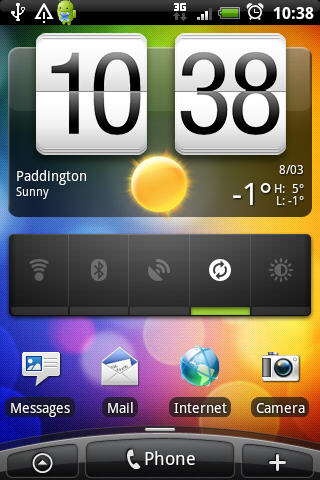
The HTC Legend 'only' has a 600MHz processor, but still manages to zip through a huge amount of tasks without any hint of slowdown. Apple, we hope you're reading and taking note.
For those uninitiated in the ways of HTC's Android/Windows Mobile interface, the main thing this offers is a large range of home screens and a large number of widgets to dump on them.
The Sense UI on the HTC Legend offers seven home screens to play with, and when you first turn on the phone a few are already installed - the large clock with location-based weather (worked out from your mobile phone signal) is the first one you'll see.
Exchange email is presented in an easy to read way, with a scrollable list of all your messages, and Friendstream is also plonked on another home screen.
Friendstream is new, as it allows you to log into Flickr, Facebook and Twitter and see all the updates in one long stream (you can guess where the name came from, we guess).
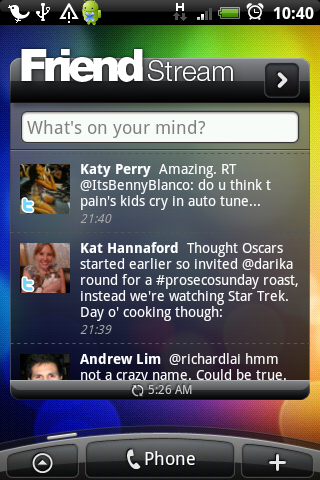
This is a new addition from HTC, and apes the idea from Motorola's MOTOBlur, although with Friendstream it feels a little easier to see all your friends in one place thanks to the customisation options.
'Favourites' is also included by default - this allows you to put your favourite buddies as little icons in a grid and assign an automatic function to them - if they're on Facebook and linked in to their contact profile (more on that later) then their profile picture will also update.
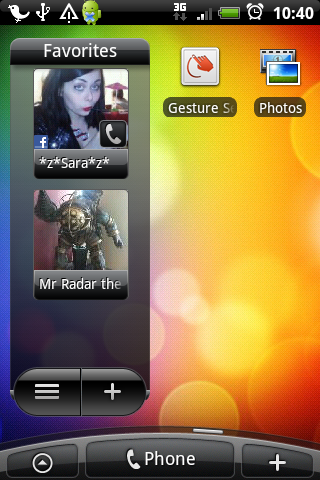
The home screen is more than just detailing which widgets are already present on it though - it's about customisation. Whether you are simply long-pressing on a widget and dragging it into a bin to remove it, or the fact that the screen will get cloudy if the weather is overcast - this UI just works.
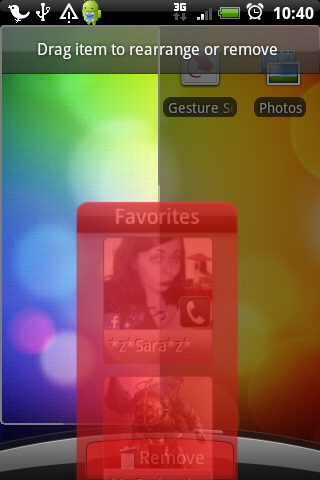
We've long been evangelists of HTC's method of laying things out, and this new Sense UI takes things up a notch - HTC has clearly noted the success Apple has had with its products, and followed the same 'form is as important as function' ideology.
Another cool addition to the overlay is HTC Leap - pinch the screen in and all seven home screens will be displayed at once (this can also be achieved by pressing the home button twice).
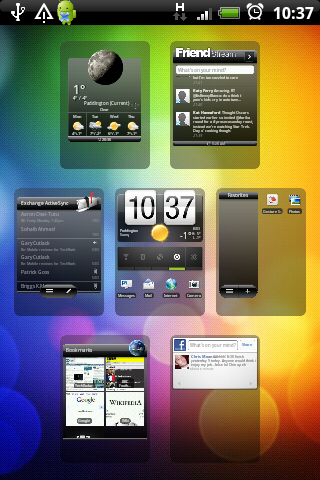
It's little touches like this that will make those that don't know about Android coo over the phone - and if you want to make waves in terms of mobile sales, attracting those that don't know about your brand is key.
The HTC Legend also has a top notch capacitive screen, as we've mentioned before - the 3.2-inch display wasn't too small, and the capacitive sensitivity is amazing - easily as good as anything out there, if not better. It registers the slightest touch, and performs just how you'd expect a touchscreen to - pivotal when you're trying to impress your Mum with your new phone.
And lest we forget - this is all built on top of Android as well, which already has a pretty good interface as it is.
Elements like being able to pull the notifications tab down from the top of the screen to see message previews or interact with your music is awesome, and the menu is accessed by tapping a small button at the bottom - with applications and icons listed in an easy-to-view grid.
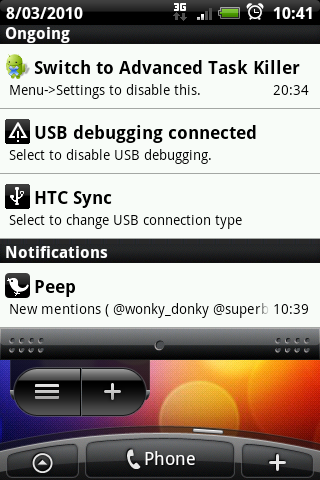
We're sure that this might not suit every mobile phone owner, as some prefer the simplicity of a menu with all the icons in one place - if that's you, then you should probably think about getting an iPhone.
But if you want to play with widgets and be able to customise your experience as much as possible, then Android, and more importantly the HTC Legend, should be your first port of call.
Current page: HTC Legend: Interface
Prev Page HTC Legend: Overview, design and feel pt 2 Next Page HTC Legend: Calling and contacts
Gareth has been part of the consumer technology world in a career spanning three decades. He started life as a staff writer on the fledgling TechRadar, and has grew with the site (primarily as phones, tablets and wearables editor) until becoming Global Editor in Chief in 2018. Gareth has written over 4,000 articles for TechRadar, has contributed expert insight to a number of other publications, chaired panels on zeitgeist technologies, presented at the Gadget Show Live as well as representing the brand on TV and radio for multiple channels including Sky, BBC, ITV and Al-Jazeera. Passionate about fitness, he can bore anyone rigid about stress management, sleep tracking, heart rate variance as well as bemoaning something about the latest iPhone, Galaxy or OLED TV.
